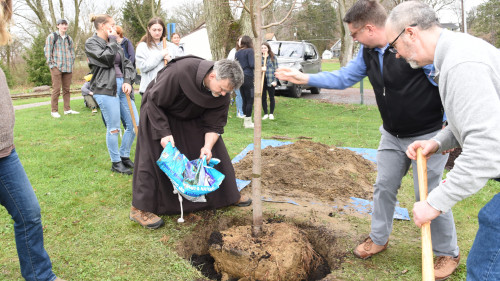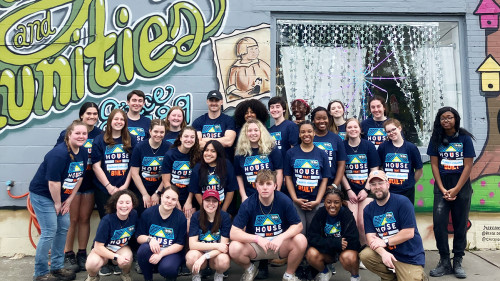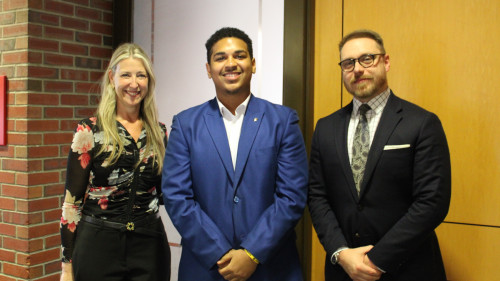
It’s fun, it’s competitive, and it’s a great opportunity to learn to work with real-world data.
DataFest is a nationwide event sponsored by the American Statistical Association; Siena is one of almost 100 colleges and universities that take part in a weekend of data hacking. Kursad Tosun, Ph.D., associate professor of mathematics, organized the Siena DataFest held on campus March 15-17, with students from Data Science, Applied Mathematics and other departments participating in small teams.
“DataFest gives undergraduates a chance to work on real-world data that does not fall within the academic setting,” said Tosun. “It’s an excellent opportunity for our students to increase a variety of skills related to data analysis and to receive preparation for a number of career options.”
Here’s how it works: participants have no knowledge of their assigned data set prior to the start of the event on Friday evening. They are given 48 hours to find meaning in the large, complex set. The teams hang out with friends while gaining experience in a subject that many will use in their future careers. There are small prizes for mini data analysis challenges, and a competition at the end of the weekend in front of a panel of judges for prizes in categories ranging from best insight, best visualization, and best use of external data. Participants also get to meet and have discussions with professionals in industry and academia.
“My favorite thing about DataFest is not knowing what data we will be presented with and then having to brainstorm with your team about what we want to focus on in the limited time we have,” said Kailey Keegan ’25. “It was great to have the opportunity to be exposed to a real-life challenge that I, among other data science students, will see in our future."
Jeremy Siji ’25 also found the collaborative atmosphere enriching.
“We all worked with participants from various academic and professional backgrounds to tackle real-world data challenges,” he said. “These data consultants provided valuable insights into approaching data challenges more effectively. This experience not only enhanced my analytical skills but also underscored the importance of teamwork and creative problem-solving.”
Jasper Paez ’25 appreciated the level of freedom the groups were afforded in working with their data sets.
“We weren't restricted to using certain software, methods, or research questions, which allowed us to start from scratch and really form our own opinions, which drove our analysis,” he said. “I would recommend any Siena students interested in computer science, data analysis, or anything data-related to participate next year. I'm pursuing a career in finance, so you don't have to be a comp sci major to take part!”
Matt Bellis, Ph.D., associate professor of physics was also closely involved with the event.
“DataFest is such a useful experience in that it allows Data Science majors and non-majors alike to see the power – and fun! – of data analysis,” said Bellis. “Not many schools offer this experience to their students and all credit goes to Dr. Tosun for his tireless enthusiasm in making this event happen.”
This year's panel judges were Dan White, Ph.D., Siena’s Health Studies program coordinator; Rob Wallace, team lead for ADSD Blaise Authoring Staff (OID) at the U.S. Census Bureau; and David T. Mayack, Ph.D., retired from New York State Department of Environmental Conservation.
Mayack said he was “extremely impressed” with the expertise in data analysis and intellectual curiosity exhibited by the students.
“Over the years, I have participated in a number of undergraduate and graduate programs,” he said. “The students in those programs, in comparison, were nowhere near the level that the Siena students were in their dedication to learning.”
One of our facilitators was Matt Boyas, a principal data scientist for The MITRE Corporation, which seeks to support STEM education in their local communities.
“During my time at DataFest, I saw students wrestling with the ‘big’ questions that define my day-to-day,” he said. “The students were not only conducting analyses to identify interesting patterns in the data, but also starting to wrestle with the big questions: why might these patterns exist and what do the patterns mean? Does anyone care about the patterns? And – perhaps most crucially – what does anyone do as a result?”

